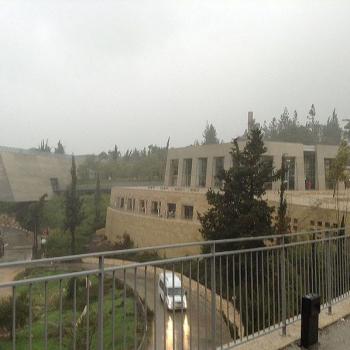
(Photo by Jaren Wilkey/BYU)
***
The Interpreter Foundation’s film Witnesses is, I presume, in its waning days on theater screens. How much longer it will run is unclear. What is clear, however, is that, if you want to see it, or if you want to see it again, or if you want somebody else to see it, you should not procrastinate the day of your attendance. Or theirs.
Most independent films never make it into theaters. Of those that do, most don’t make much money. And, for those that do get into theaters, most seldom last past a month. Witnesses has done well by comparison. But we never anticipated that it would stay in theaters forever. After all, neither Avatar nor Titanic did. And when was the last time that you saw Gone With the Wind on a big silver screen?
***
And, while we’re at it, here are links to a few earlier articles in Interpreter:
Daniel C. Peterson, “The Interpreter Foundation and an Apostolic Charge”
Abstract: In April 2006, Dallin H. Oaks, in unpublished remarks at the naming of the Neal A. Maxwell Institute for Religious Scholarship (as the successor to FARMS), reminded listeners that “this institute belongs to God.” On November 10, 2018, Elder Jeffrey R. Holland (also in unpublished remarks, titled “The Maxwell Legacy of the 21st Century”) renewed that commitment: the Institute should be “as faithful as eternal truth, and as bright as the light of truth that is in us.” This is, likewise, the vision of The Interpreter Foundation, in contrast to Latter-day Saint “academic ventures” at some universities. It should be “significantly different from the present national pattern,” Elder Holland emphasized. “There are times when our faith will require an explicit defense.” The Interpreter Foundation aspires to be in the fore of any such efforts.
Jared Riddick, “An Ancient Survival Guide: John Bytheway’s Look at Moroni”
Abstract: Moroni’s years of wandering alone after the battle of Cumorah have been often discussed, but not in the context of how they impacted his writing and editorial work. John Bytheway’s latest offering provides us insight into the man Moroni and how his isolation impacted the material that he left for his latter-day readers.
Review of John Bytheway, Moroni’s Guide to Surviving Turbulent Times. (Salt Lake City: Deseret Book, 2017). 159 pp., $11.99.
Abstract: Beyond his autobiographic use of Joseph’s name and biography, Nephi also considered the name Joseph to have long-term prophetic value. As a Semitic/Hebrew name, Joseph derives from the verb yāsap (to “add,” “increase,” “proceed to do something,” “do something again,” and to “do something more”), thus meaning “may he [God] add,” “may he increase,” or “may he do more/again.” Several of the prophecies of Isaiah, in which Nephi’s soul delighted and for which he offers extensive interpretation, prominently employ forms of yāsap in describing iterative and restorative divine action (e.g., Isaiah 11:11; 26:15; 29:14; cf. 52:1). The prophecy of the coming forth of the sealed book in Isaiah 29 employs the latter verb three times (Isaiah 29:1, 14, and 19). Nephi’s extensive midrash of Isaiah 29 in 2 Nephi 25–30 (especially 2 Nephi 27) interpretively expands Isaiah’s use of the yāsap idiom(s). Time and again, Nephi returns to the language of Isaiah 29:14 (“I will proceed [yôsīp] to do a marvelous work”), along with a similar yāsap-idiom from Isaiah 11:11 (“the Lord shall set his hand again [yôsîp] … to recover the remnant of his people”) to foretell the Latter-day forthcoming of the sealed book to fulfill the Lord’s ancient promises to the patriarch. Given Nephi’s earlier preservation of Joseph’s prophecies regarding a future seer named “Joseph,” we can reasonably see Nephi’s emphasis on iterative divine action in his appropriation of the Isaianic use of yāsap as a direct and thematic allusion to this latter-day “Joseph” and his role in bringing forth additional scripture. This additional scripture would enable the meek to “increase,” just as Isaiah and Nephi had prophesied.
John C. Hancock, “A Compelling Case for Theosis”
Abstract: What is theosis? Why does the doctrine of theosis matter? Why did God become man so that man might become God? In his book To Become Like God, Andrew C. Skinner answers these questions with compelling clarity. He provides ample convincing evidence that, far from being a deviation from original Christian beliefs, the doctrine of theosis, or the belief that human beings have the potential to become like God, is central to the Christian faith.
Review of Andrew C. Skinner, To Become Like God: Witnesses of Our Divine Potential (Salt Lake City: Deseret Book, 2016). 164 pp. $18.99 (hardback).
David M. Calabro, “An Inviting Exploration”
Abstract: This informative and very readable volume, targeted to a Latter day Saint audience, serves as an introduction to the Apocrypha and an exploration of Latter-day Saint views of the books. Even those already familiar with the Apocrypha will find this book insightful in the Latter-day Saint approaches it brings to bear. Even so, the book touches too lightly on some issues, including the extent of the Apocrypha, the phenomenon of pseudonymity, and the reasons for the current exclusion of the Apocrypha from the Latter-day Saint canon.
Review of Jared W. Ludlow, Exploring the Apocrypha from a Latter-day Saint Perspective (Springville, Utah: CFI, 2018). 234 pp. $16.99.
Jeff Lindsay, “A Valuable LDS Resource for Learning from the Apocrypha”
Abstract: Latter-day Saints are often aware that the Apocrypha contains valuable sacred material along with some “interpolations of men,” but few know how to approach those ancient texts and what they could learn from them. A new book by Jared W. Ludlow provides a helpful tool to guide LDS readers in appreciating the Apocrypha and exploring the material in these highly diverse sacred documents.
Review of Jared W. Ludlow, Exploring the Apocrypha from a Latter-day Saint Perspective (Springville, Utah: CFI, 2018). 234 pp. $16.99.












